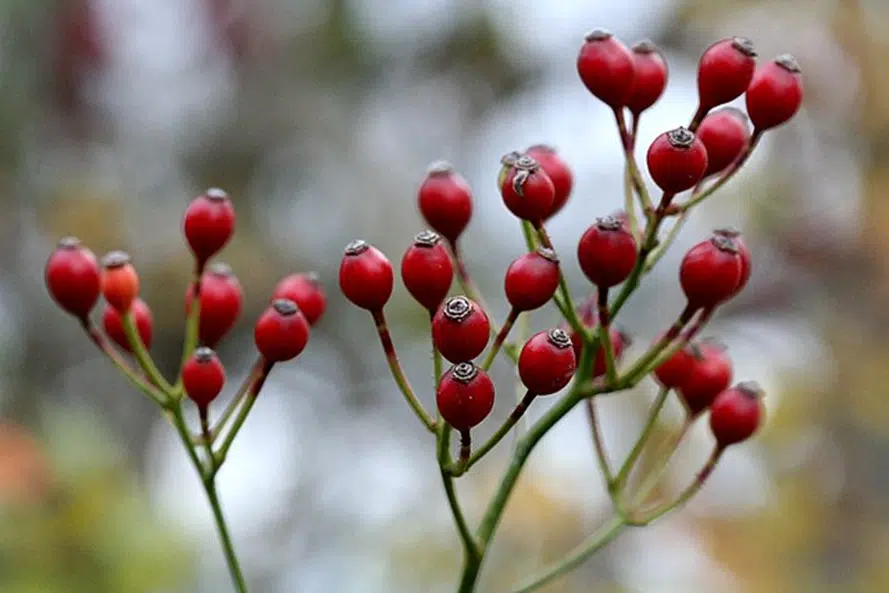
I’ve learned many things working as a Gardener here at the Arboretum, particularly regarding the importance of promoting and maintaining biodiversity. Much of what I’ve learned I have tried to apply at home, like removing garlic mustard from my property and choosing only native trees to add to my yard. But I must admit, those are easy things to do, and some of the more challenging tasks that I take on at work I have ignored doing at home. My wake-up call occurred recently when improvements to my driveway, which passes through a wooded area, required the removal of several trees, unveiling an enormous multiflora rose with an impenetrable thorny web of 15-foot canes that arched to the ground like giant spider legs. And I didn’t have to look to far to see that multiflora rose was everywhere up and down my property line. It may be a rose, but this is not necessarily a good thing. Multiflora rose is classified as a noxious weed in many states and is considered one of the most destructive threats to biodiversity in the United States.

are not compelled to remove multiflora rose from their property
Rosa multiflora was introduced to North America from east Asia in the mid-19th century as an ornamental shrub and a hardy rootstock for ornamental roses. Following the Dust Bowl disaster of the 1930’s, it was cultivated and planted extensively to control erosion, contain roaming livestock, and provide food and cover for wildlife. It wasn’t long, however, before multiflora rose began to overrun whole farms and render fields unusable for planting and grazing. In the 1960’s there emerged a growing concern that its ability to escape cultivation and its invasive nature was having a serious negative impact on our native plant communities and wildlife habitats.
Multiflora rose tolerates a wide range of conditions which allow it to invade almost any habitat. It displaces other vegetation and establishes itself in dense monocultural thickets, with long canes that arch downward and root when they contact the ground. And because the flowers are monoecious (containing both male and female parts), only one plant is needed to produce seed – it’s estimated that a well-established multiflora rose can produce 500,000 or more seeds annually which then remain in the soil bank for as much as 20 years.

The seed can remain viable in the soil long after the plant dies or is eradicated.
It’s been estimated that over 45 million acres in the eastern US have been overrun with multiflora rose. That estimate, however, was made over 25 years ago. Suffice it to say that many millions of acres in this country are losing native plant and wildlife biodiversity due to the degradation caused by multiflora rose.

by its fringed stipules at the base of each leaf stalk and its downward curving prickles.
The Ohio State Extension recommends a two-step approach to the eradication of multiflora rose – destruction of existing plants and a regular program of seedling control. Seedlings are easy to pull out and digging individual plants can be effective so long as all roots are removed. Repeated cutting or mowing can control top growth and inhibit seed production, and systemic herbicides may also be used instead of, or in conjunction with, mechanical control methods.

prevent multiflora rose from becoming established in new areas

Lorinda Laughlin
Gardener
Lorinda Laughlin is an Arboretum Gardener in the Myrtle S. Holden Wildflower Garden and areas surrounding Blueberry Pond.













